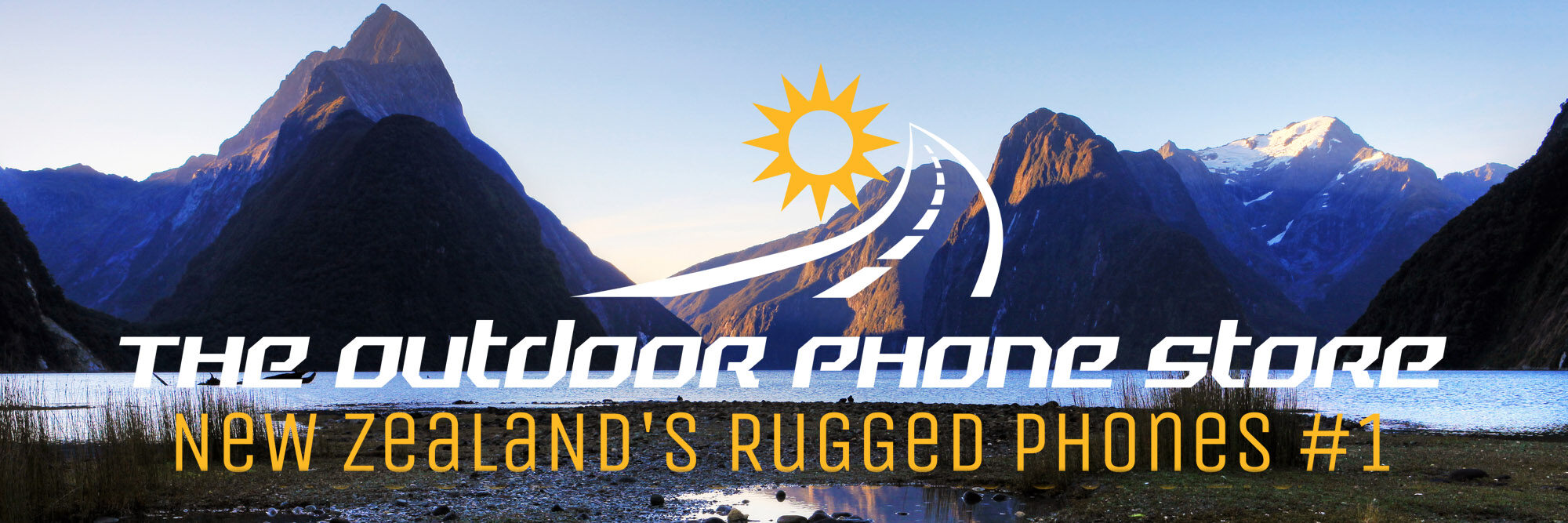 TRAFFICKING IN TEARS
TRAFFICKING IN TEARS
Slavery was supposed to be a thing of the past. But in the dark corners of Australia, it is still flourishing – and as SHAUN DAVIES reports, despite recent efforts the government is losing the fight against the devastating trade in human property
It’s a story that’s guaranteed to break your heart. A 22-year-old law student from Thailand, promised a job in a restaurant where she can legitimately earn millions of baht (the Thai currency), flies into Australia in late November 2002 with high hopes of saving up enough money to buy a car.
But within 24 hours, the student’s situation takes a nightmarish turn. Instead of starting work in a restaurant, she is taken to a house in Surry Hills, handed a g-string and informed that she owes her new employers $200,000.
She has been bought to work as a prostitute – and she can’t leave until she pays the money back.
Shipped from brothel to brothel, she is forced to have sex with up to 20 men each day. If clients refuse to use condoms she can’t turn them down. At night she is locked in a house with fourteen other girls. She begs clients for help – and exchanges phone numbers with some of them – but no-one comes to her aid.
So on the afternoon of January 5, 2003, the student makes a decisive move. She convinces her manager to let her use the brothel’s telephone, telling him she wants to order a pizza. Locking herself in a bathroom, she dials the number she found in the ‘big yellow book’: 000.
‘I want police help me, understand?’ she tells the operator. ‘People come here, lie on me, work in store… Help me, I want to go home, OK?’
The manager bursts into the cubicle and ends the call abruptly, but police raid the brothel later that day and take the student away to a woman’s refuge.
The student’s disturbing allegations, heard recently in open court in Sydney, led to the arrest of two women alleged to own the brothel, and another man alleged to have managed it. All three have pleaded not guilty two charges including exercising ownership over a slave, knowingly conducting a business involving sexual servitude and causing a person to remain in sexual servitude. They are facing jail terms of up to 25 years.
In some ways the case is a landmark – the first of its kind since current legislation against human trafficking was introduced in 1999. It is also the first since the Federal Government allocated $20 million over four years to combat sex slavery in 2003, following public pressure after the death of a trafficked woman named Puontong Simaplee in Villawood detention centre.
This substantial package funded a new federal police task force, as well as education programs for police and immigration officers. The Government also placed an official in Thailand with a brief to combat sex slavery and created new visas that allow trafficked women to stay in Australia. (See sidebar.)
A spokesman for the Minister for Justice and Customs, Senator Chris Ellison, told Investigate that the government has been ‘doing its utmost to fight this crime through concerted domestic, bilateral, regional and international efforts’.
But those who work closely with trafficked women believe much more still needs to be done. And it seems that the crooks are getting smarter – finding methods to avoid detection and legal loopholes to escape prosecution.
So are we winning the fight against sexual servitude and slavery? And if not, what more can we do?
 Besides weapons and drugs, international crime syndicates are increasingly trading in a less risky commodity: human beings. International estimates of total trafficking levels (which includes trafficking for the labour market as well as the sex industry) vary wildly, but the US government believes the total figure is somewhere in the vicinity of 600,000 to 800,000 persons ever year. Interpol and the United Nations both rate the issue as a top priority.
Besides weapons and drugs, international crime syndicates are increasingly trading in a less risky commodity: human beings. International estimates of total trafficking levels (which includes trafficking for the labour market as well as the sex industry) vary wildly, but the US government believes the total figure is somewhere in the vicinity of 600,000 to 800,000 persons ever year. Interpol and the United Nations both rate the issue as a top priority.
Some experts say that the rise in trafficking for sexual servitude to developed nations has been brought about by demand. Women from rich countries don’t want to work in the sex industry, but at the same time more men are using sex workers, so demand is outstripping supply – and organised crime is filling the gap.
Others say the push is coming from the supply side. Sex workers from poor countries want to migrate to developed nations but cannot do so legally. So they look to traffickers to sneak them into a country of choice.
While we know for certain that Australia is a destination market for trafficking, it is impossible to know exactly how many women are brought here each year, says University of New England academic Kerry Carrington.
‘For a start it’s difficult to quantify any form of crime – it’s always going to be hidden. But an added issue here is that it’s not only the criminals. The victims may also hide the crime because of other consequences,’ she says.
A recent Government report claimed there were probably less than 100 trafficked women in Australia. However, Carrington is more inclined to agree with groups who put the figure much higher – around 1000 women every year.
Carrington has one major gripe with the Government’s policy on trafficking – criminal justice visas are only granted to women when there’s a strong chance their evidence will lead to a successful prosecution. Otherwise they are repatriated to their home countries and back into danger when the syndicates that trafficked them seek revenge.
‘I think it’s dubious to say that this meets our obligations under human rights laws,’ she says.
‘As there is no guaranteed migration outcome for assisting a prosecution, there is still little incentive (for the women) to assist prosecutions. Those victims unable to assist the prosecution of traffickers for fear of reprisal, either against themselves or their families abroad, or other reasons, remain unprotected.’
Senator Ellison’s spokesman told Investigate that the visa regulations were fair and ‘provide support to people in genuine need
of protection and who are assisting law enforcement agencies with their investigations’.
But in an interview with the ABC in 2004, the Senator was more direct: ‘We don’t want to make it too attractive for people to come here because they’ll think that they’ll get very good benefits and
so they can come here and then claim to be a victim and enjoy
those benefits.’
But Carrington says that each woman’s case should be critically assessed while she is on a bridging visa. If her case meets a civil level of proof (that is, it seems true on the balance of probability), they should get a longer-term visa.
Shirley Woods, an outreach worker for Australian NGO Project Respect, works with trafficked women on a daily basis. She believes that the approach of police and immigration officers has come a long way since the days of kicking down brothel doors and shipping illegal workers out as soon as possible, though Investigate was supposed to meet with an allegedly trafficked woman from Thailand for this article who was picked up by DIMIA and deported before we could speak with her.
However, Woods says there’s some way to go before officers can handle cases of trafficking with the deft sensitivity that would make trafficked women trust them.
‘I think it’s a matter of more people knowing the right questions: “Do you have your passport?”, “Where do you live?”. A lot of women are shipped from brothel to brothel and don’t know their address,’ she says. ‘There are a lot of questions you can ask.’
In October 2003, the AFP delivered an intensive four-week course in dealing with trafficking to senior investigators from DIMIA, state police agencies, customs and the tax department. Woods believes these education programs will eventually have an impact.
‘It’s very difficult because it’s almost an instinctive thing. So I think that as more immigration and police officers work with trafficked women the situation will get better.’
 The jewel in the crown of the Government’s trafficking package is the Transnational Sexual Exploitation and Trafficking Team (TSETT) – a kind of sex-slave commando force which the AFP says is ‘modelled on the successful narcotics strike team approach, with intelligence-driven investigations and the flexibility and capacity to respond quickly to the highest priority cases.’
The jewel in the crown of the Government’s trafficking package is the Transnational Sexual Exploitation and Trafficking Team (TSETT) – a kind of sex-slave commando force which the AFP says is ‘modelled on the successful narcotics strike team approach, with intelligence-driven investigations and the flexibility and capacity to respond quickly to the highest priority cases.’
It’s difficult to quantify how effective this task force has been. We do know that the AFP has conducted 38 investigations into sexual servitude and slavery-related offences since 2003, and that a total of 15 people are currently facing charges for these crimes.
The AFP has not responded to queries about the current level of trafficking in Australia. But Project Respect’s Shirley Woods says she has come across more trafficked women since the taskforce was established (which, she points out, may just be chance). She believes traffickers are getting smarter.
‘There’s been a huge shift away from Thai women and towards Korean women recently because they can get student visas here. The whole payment system and everything has changed,’ she says.
In one recent case, Woods says, trafficked women in a Melbourne brothel were actually given one-third of the money they earned. But of this third, an extra portion went to the brothel owner to service the woman’s debt, and another portion was given to an ‘interpreter’ who couldn’t speak Korean. All up, the women still only kept one-ninth of the money they earned.
‘I think the traffickers have sat down and had a think about what the legislation means and how they can get around it,’ says Woods. ‘I’m interested in how they’re getting around the education issues associated with student visas – maybe they’re paying off [English language] schools.’
Kerry Carrington also believes that the traffickers have changed tactics. ‘I’ve heard anecdotally that the modus operandi of the traffickers is now to circulate the women and move them along, so that they can avoid being detected,’ she says.
Some advocates believe a radical approach is needed to defeat trafficking – issuing temporary visas to sex workers so that they can legally work in Australian brothels.
Fiona Patten, spokeswoman for the Eros Foundation, says giving sex workers temporary visas would completely undercut the trafficking market. She points out that many Thais pay huge amounts of money to legitimate employment agencies to organise a job and a visa in Australia – at least as much as trafficked women pay to brothel owners. The problem, Patten says, is that sex workers can’t go to a legitimate employment agency.
‘From the industry’s point of view, we see sex work as valid work. By enabling women to come out here and work legally in a system where you can ensure that they’re working in safe conditions, where you can ensure that they’re not being exploited, is that not a better thing?’
However, Patten admits that any political party who took up this idea would be committing electoral suicide.
Ranged against Patten and other sex industry groups (such as the Scarlet Alliance and SWOP) are abolitionists who say that cutting demand by outlawing prostitution is the only way to stop trafficking. Project Respect president Kathleen Maltzahn is a careful advocate of this position.
‘We’ve got to go back to asking who prostitution works for – and it’s not the women who do it,’ she said in a 2004 lecture. ‘Prostitution is set up for men. That’s what trafficking tells us so clearly. When there are enough women who agree to do prostitution the industry will use them, but if there aren’t… the industry brings women in, with absolute disregard for their choices, desires, hopes.’
‘We need to stop talking about prostitution as if women’s choices make it happen and start asking about men’s choices. Without this work trafficking will continue unabated.’
 In the US, a different group of abolitionists are dominating the trafficking debate – the Christian right. Groups such as the International Justice Mission have the ear of President Bush, who has pledged $150 million to eradicating sex slavery over two years. But sex industry lobbyists are vehemently opposed to the abolitionist approach. It’s supply, they say, not demand, which is driving the trafficking market.
In the US, a different group of abolitionists are dominating the trafficking debate – the Christian right. Groups such as the International Justice Mission have the ear of President Bush, who has pledged $150 million to eradicating sex slavery over two years. But sex industry lobbyists are vehemently opposed to the abolitionist approach. It’s supply, they say, not demand, which is driving the trafficking market.
‘I think when you consider (the abolitionist) argument in a global context it doesn’t make sense,’ Scarlet Alliance president Janelle Fawkes says. ‘Many people travel for work, often to another country where the earning potential is greater.’
She gives the example of Burmese women who migrate to Thailand to do sex work, which she says does not make sense in terms of demand.
‘Trafficking happens not because of an unmet demand by clients, but a demand by sex workers who seek to enter Australia to work in the sex industry. It’s a worker’s market, not a client’s market.’
As Investigate goes to print, the trial of Tran, Qi and Xu is still in progress. Another slavery-related trial has just begun in Melbourne and three further matters are ready to go before the courts.
Compare this to 2003, when only one person had ever been convicted of sexual servitude offences in Australia: Melbourne brothel owner Gary Glazner, who made an estimated $1.2 million peddling women to the sex industry. For his crimes, Glazner (who was tried under the Victorian Prostitution Control Act 1994) received a pathetic $30,000
fine and a 30-month suspended sentence.
Although the situation has improved, trafficking will never be completely stamped out unless there is a major shift in our approach to the sex industry as a whole. If there is a market for trafficking (whether supply or demand-driven), criminals will always find ways to exploit this – no matter how well-trained the AFP’s special taskforce is.
While a controversial idea, a legitimate working scheme for foreign prostitutes might cut the market from beneath the trafficker’s feet, and give these women a chance to come to the country for a short time and provide a regulated working environment. But realistically, there’s not a snowball’s chance in hell that Australia will embrace the idea of visas to foreign prostitutes. For now we’ll have to rely on more basic initiatives and the experts agree that the Government is heading down the right track. It just needs to walk a little further and a little faster.
WHAT’S IN THE PACKAGE?
The Government’s $20 million package attempts to deal with attempts deal with trafficking through a number of initiatives, including:
* The establishment of the AFP’s Transnational Sexual
Exploitation and Trafficking Team – there have been AFP 38 investigations into trafficking since 1 January 2004.
* The creation of a new position to combat trafficking – Senior Migration Officer Compliance (SMOC). This position is based in Thailand, which has until now been the source country for most women trafficked into Australia.
* Changes to visa regulations. Women who may have been involved in trafficking are now granted a bridging F visa which allows the AFP to assess their case. If a woman can assist the AFP in a prosecution she is granted a criminal justice visa. Women deemed to be in some kind of danger if they return to their home country may be granted a witness protection visa (trafficking).
* Education of immigration and police officers to ensure that trafficking is recognised and that women are not deported before they can give evidence.
* Proposed amendments to legislation that will bring Australian law more closely into line with UN trafficking protocol. These have been tabled in the senate and are under consideration.







